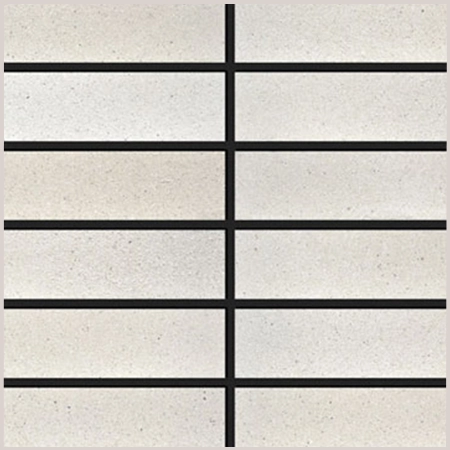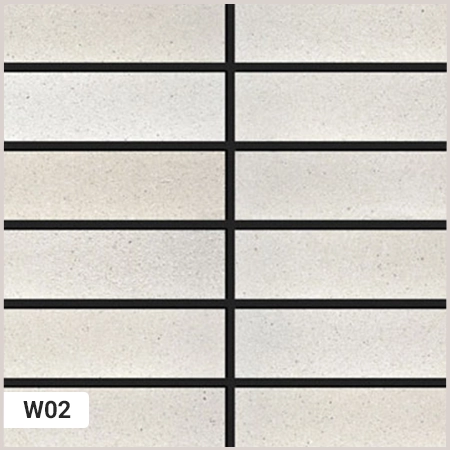Description
Materials and Manufacturing
White bricks are typically made from clay, sand-lime, or concrete. Their bright appearance can result from natural material composition or through specific treatments during the manufacturing process:
- Natural Materials:
- Some types of clay naturally produce lighter tones when fired, especially when they contain low levels of iron oxide.
- Whitewashing:
- Traditional red or other colored bricks can be coated with a mixture of lime and water to achieve a whitewashed effect.
- Glazing or Coatings:
- A white glaze or finish can be applied to bricks before firing to create a glossy or matte surface.
- Pigments:
- Concrete bricks can incorporate white pigments to produce a consistent color throughout.
Characteristics
- Neutral Elegance: White bricks exude a minimalist charm that fits well with a wide range of architectural styles.
- Reflective Properties: Their light color reflects more sunlight, making them energy-efficient in warm climates.
- Durability: Like other bricks, white bricks are strong and long-lasting, resistant to weathering and wear.
Applications
- Residential Architecture:
- Exteriors: White bricks are commonly used to create sleek, modern facades or to add brightness to traditional homes.
- Interiors: Exposed white brick walls are a popular design choice for industrial, Scandinavian, or farmhouse-style interiors.
- Commercial Buildings:
- White bricks bring a clean, professional look to offices, shops, and restaurants, often creating a sense of spaciousness.
- Landscaping:
- Used in garden walls, pathways, or patios, white bricks provide a fresh and refined look to outdoor spaces.
- Restoration Projects:
- White bricks are often chosen to restore or replicate historical buildings with light or neutral tones.
Advantages
- Versatility: White bricks pair effortlessly with various materials, such as wood, glass, metal, and natural stone.
- Timeless Appeal: Their neutral color works equally well in contemporary and classic designs, ensuring they never go out of style.
- Energy Efficiency: Their reflective surface helps reduce heat absorption, making them ideal for warm climates.
- Enhanced Light: White bricks can brighten spaces by reflecting more light, both indoors and outdoors.
Considerations
- Maintenance: White bricks can show dirt, stains, or discoloration more easily than darker bricks, requiring regular cleaning to maintain their appearance.
- Cost: They may be more expensive than standard bricks, especially if specially coated or glazed.
- Fading: In some cases, the white finish may fade or weather over time, depending on the material and exposure to environmental conditions.






















































Reviews
There are no reviews yet.